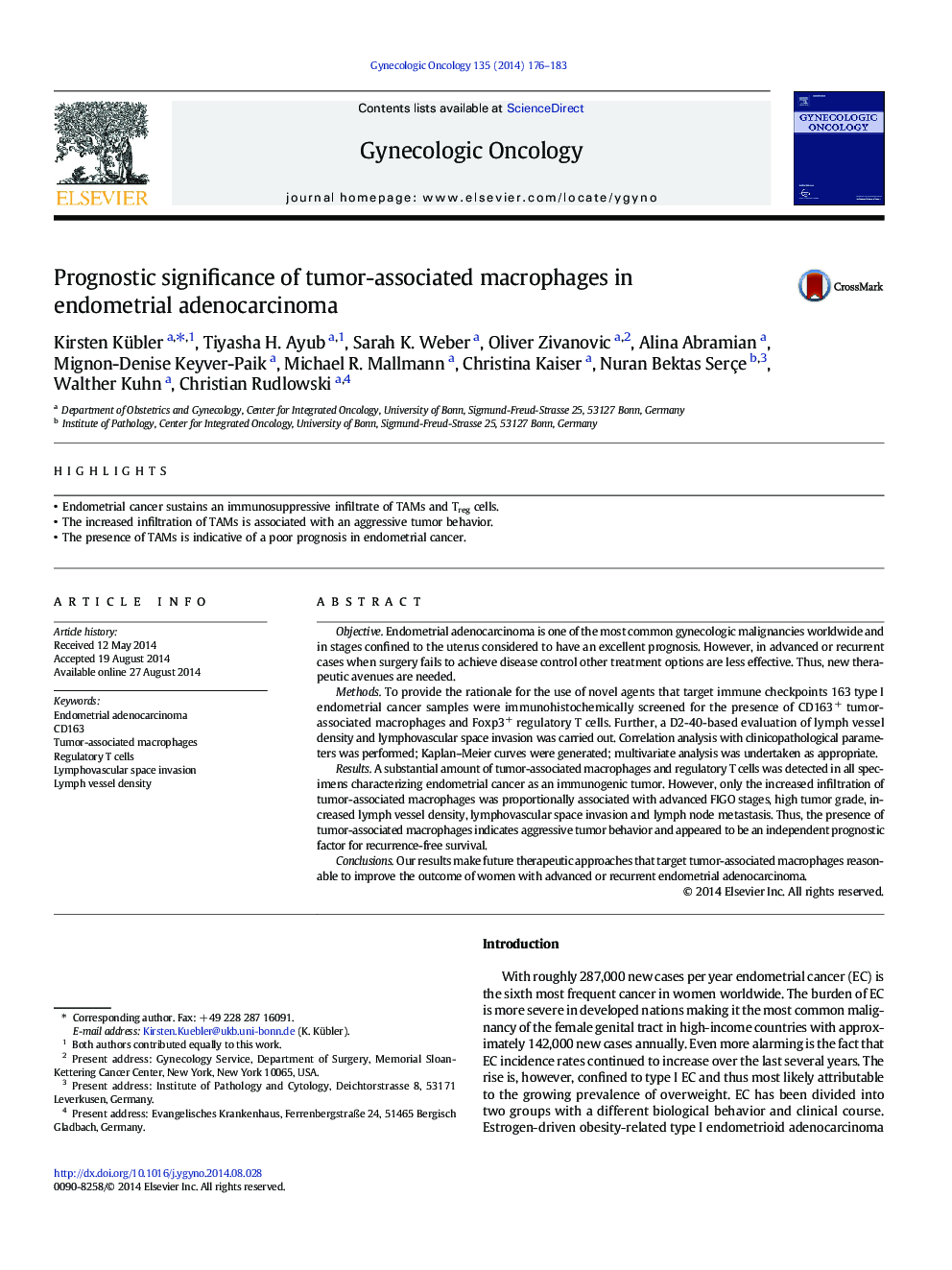| Article ID | Journal | Published Year | Pages | File Type |
|---|---|---|---|---|
| 6183268 | Gynecologic Oncology | 2014 | 8 Pages |
â¢Endometrial cancer sustains an immunosuppressive infiltrate of TAMs and Treg cells.â¢The increased infiltration of TAMs is associated with an aggressive tumor behavior.â¢The presence of TAMs is indicative of a poor prognosis in endometrial cancer.
ObjectiveEndometrial adenocarcinoma is one of the most common gynecologic malignancies worldwide and in stages confined to the uterus considered to have an excellent prognosis. However, in advanced or recurrent cases when surgery fails to achieve disease control other treatment options are less effective. Thus, new therapeutic avenues are needed.MethodsTo provide the rationale for the use of novel agents that target immune checkpoints 163 type I endometrial cancer samples were immunohistochemically screened for the presence of CD163+ tumor-associated macrophages and Foxp3+ regulatory T cells. Further, a D2-40-based evaluation of lymph vessel density and lymphovascular space invasion was carried out. Correlation analysis with clinicopathological parameters was performed; Kaplan-Meier curves were generated; multivariate analysis was undertaken as appropriate.ResultsA substantial amount of tumor-associated macrophages and regulatory T cells was detected in all specimens characterizing endometrial cancer as an immunogenic tumor. However, only the increased infiltration of tumor-associated macrophages was proportionally associated with advanced FIGO stages, high tumor grade, increased lymph vessel density, lymphovascular space invasion and lymph node metastasis. Thus, the presence of tumor-associated macrophages indicates aggressive tumor behavior and appeared to be an independent prognostic factor for recurrence-free survival.ConclusionsOur results make future therapeutic approaches that target tumor-associated macrophages reasonable to improve the outcome of women with advanced or recurrent endometrial adenocarcinoma.
